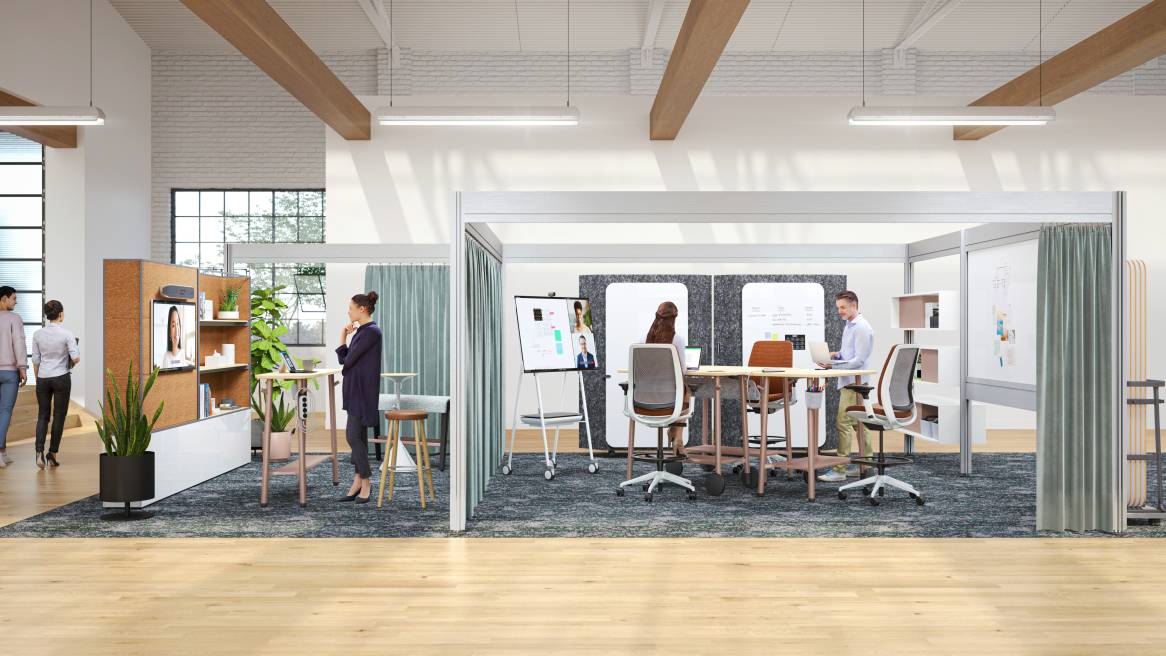ManpowerGroup, Microsoft + Steelcase Explore Workplace Pilots
How experts in people, place and technology are prototyping, measuring and learning.
Over the course of the summer, the Covid-19 Delta variant caused more disruption in an already complex environment. Some organizations delayed returns to the office. While others returned with new health and safety protocols in place. In a time of uncertainty, how can leaders make the best decisions for their people and their organizations?
Research suggests 94% of global companies plan to run pilots or prototypes. Experts in people, place and technology joined our panel discussion (watch it now on demand) September 15, 2021 hosted by Chris Congdon, 360 Editor-in-Chief, to share what they are prototyping, measuring and learning.
Our experts:
- ManpowerGroup: Kari Atkinson, VP Employee Rewards and Experience, North America
- Microsoft: Matthew Ayres, Global Workplace Services Research & Innovation Lead
- Steelcase: Elise Valoe, Director of Workspace Futures Research and New Business Innovation
Chris Congdon: What is your organization’s current state of return to office?
Kari Atkinson: ManpowerGroup is headquartered in Milwaukee, Wisconsin. The majority of our U.S. and Canadian branch offices are open. Headquarters plans a phased return in early October.
Matthew Ayres: I’m located in Seattle where some essential workers are back in Microsoft’s Puget Sound offices, but most have not yet returned. In other geographies, for example China, people have been back since the middle of 2020.
Elise Valoe: I’m in the Steelcase Global Business Center in Grand Rapids, Michigan. Most employees are back in the office, choosing to spend most of their week here while still spending some time at home.
CC: Tell us what you’re testing, piloting or prototyping.
KA: We know from our 2021 What Workers Want research report that people wanted more flexibility in how they work and that’s only grown since the start of the pandemic. So in May 2020, when our branch offices started to return, we introduced new levels of flexibility with a pilot program called “Work Your Way.” The program varies by role. Some people need to be in the office to support clients and associates, but there are other ways for us to infuse flexibility like enabling them to start their day later so they can drop their kids off at school or end their day at home.
Our second pilot rethinks our headquarters workspace to make it a destination for employees. We’ve redesigned some of our spaces to create more collaboration areas and added Wi-Fi and work tools to our outdoor terrace to create another beautiful place for people to come together and collaborate, connect and celebrate, all things we know they’ve missed.
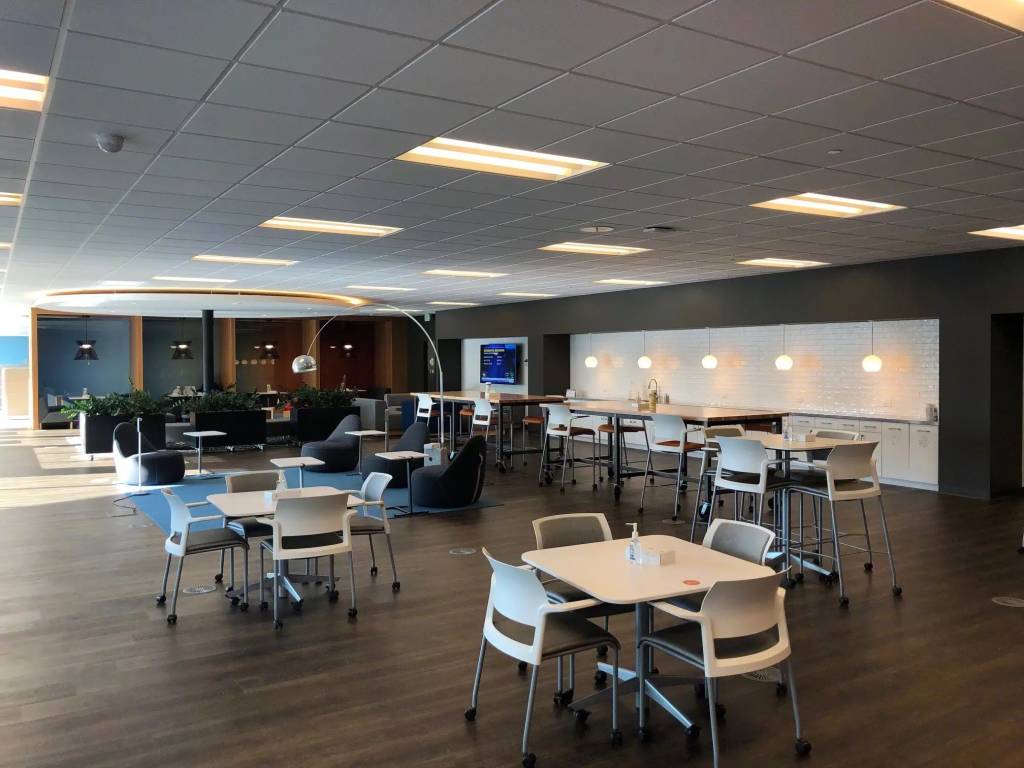

MA: To help Microsoft prepare for the future of work we began, pre-pandemic, an ongoing research initiative to explore and understand the Future Workforce by studying Gen Z youth.
This exploration has been shaped by three streams of inquiry:
- How individual workers and the workforce at large is evolving
- The differences in this evolution across cultures and regions
- Design and planning implications for the workplace
The pandemic has accelerated many aspects of work and workplace design, one is the desire for flexibility of where and when people work.
The Project Outpost concept addresses worker needs discovered in our research and many of the emergent realities of Covid-19. Project Outpost is a new type of workplace that we are testing in several global locations. They are spaces designed to be in tune with a broader understanding of our employees where the work experience is also the family and community experience, hence we are developing a unique set of typologies that better meet the needs of our employees’ work and life experiences.
Project Outposts are an addition to the ecology of places where employees can work and support our aim to meet them where they are.

EV: To meet the new needs emerging from hybrid work, we spent the summer testing a range of spaces and technology experiences across nine different prototypes from individual to large group collaboration sessions. We tested formal meeting spaces for 4-6 people with closed doors, video conferencing, multiple displays and white boards to support generative work.
We also prototyped informal ancillary spaces that previously may not have been considered a hybrid work environment. They’re designed to look and feel more like your living room with the primary purpose of supporting distributed conversations. We invited people to submit feedback via a QR code and conducted interviews with people who used the spaces.
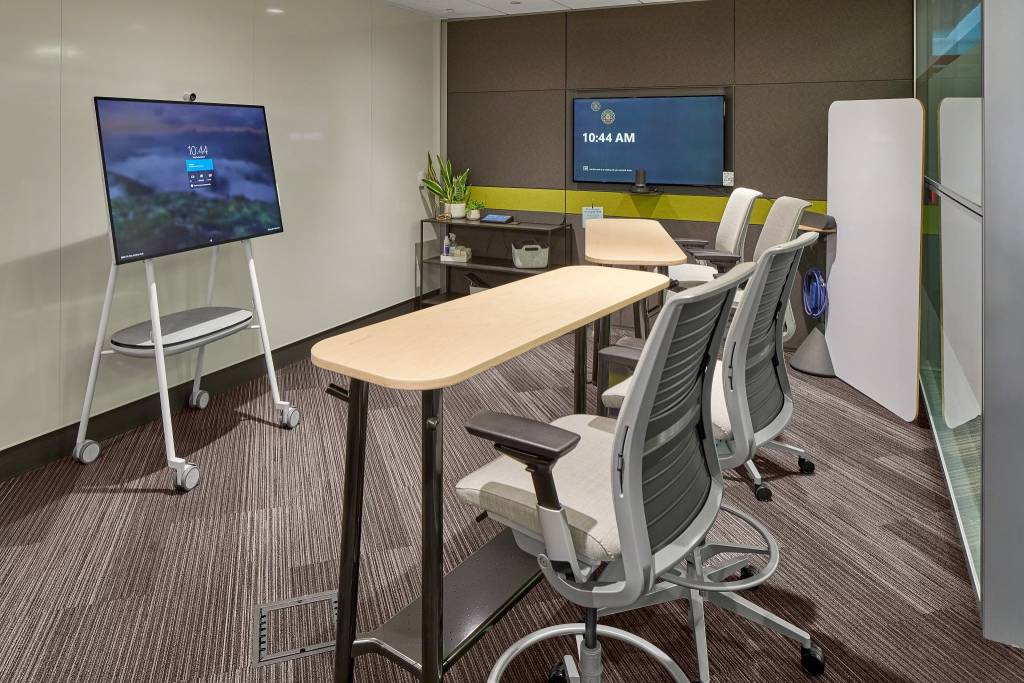
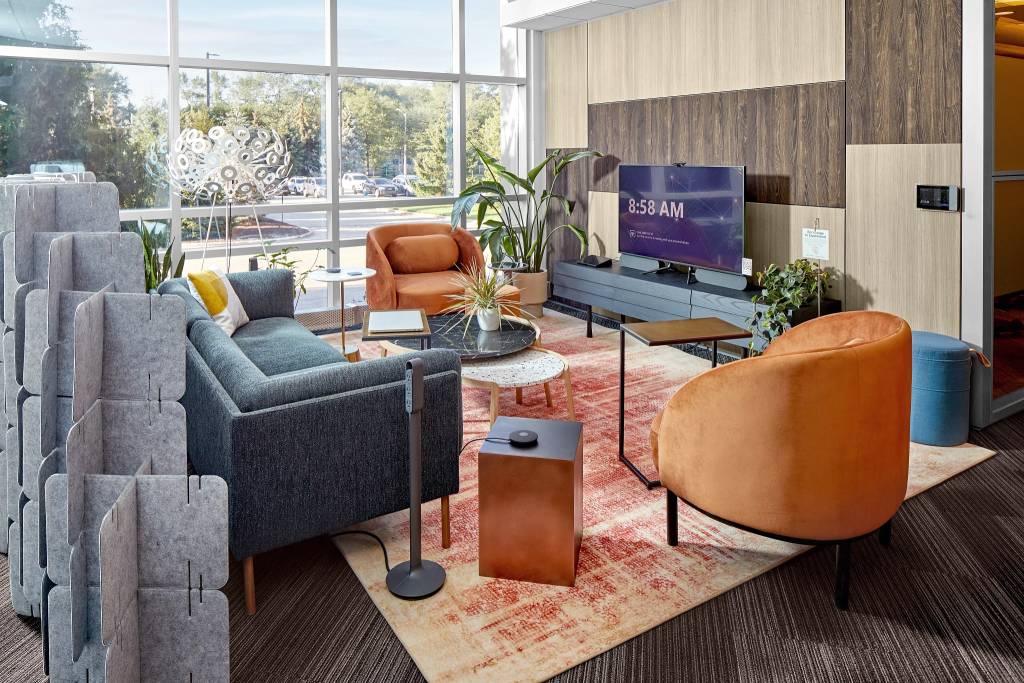
CC: Key concepts informed all nine of those prototypes. Can you share those and how they manifested themselves in the spaces?
EV: Our three key concepts are equity, engagement and ease. Equity is about allowing remote teammates to get off the display “stage” and mix in with their in-person counterparts. Engagement speaks to designing human and engaging experiences across a range of settings. It’s important to arrange people and content to ensure more equal participation and to separate people and content when possible. Finally, ease refers to creating a variety of intuitive virtual and physical experiences, making it easy to navigate from one type of meeting to another.
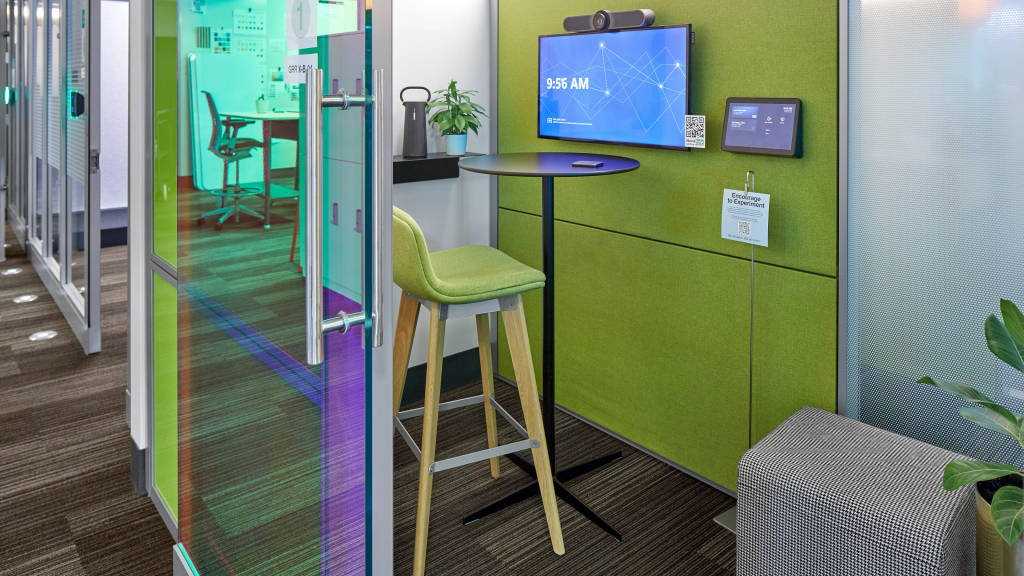
CC: What results are you seeing?
KA: When we introduced “Work Your Way,” branch offices really embraced it. Yet, for those who’ve been remote for long periods of time, we are now going through a whole new learning curve. We are piloting again with a new group of employees to balance individual flexibility with team and business needs. Different parts of your employee population are going to have different needs and it’s important to listen as you implement change management.
MA: The Project Outpost concept is sparking conversations about how we might adapt our workplace design guidelines to be even more relevant to the locations and work and life experiences of our employees. In a way, the idea of Project Outposts is unlearning and relearning what we do around workplace design.
EV: Our employees are appreciating the range of spaces we’re testing which gives them choice and control over where to work. Since people are now very comfortable with their own devices, we’ve designed our spaces to let them control the meeting from the in-room devices or their laptop. We’ve learned training and regular use are critical to people get comfortable with the space and technology. QR codes in the rooms help people learn or re-learn the techn. And we’ve asked people to be hybrid champions, so they can spread knowledge about new hybrid settings with their teammates.
CC: As we embrace hybrid work, how do you think culture needs to change?
KA: It is truly a balance of how you introduce more flexibility based on individual preference, but also keep a focus on what’s good for the collective, the overall culture and the organization. It’s about a blend of individual experience with the need for collaboration and connection. As my team has come back to the office, there are problems we have solved very quickly by being together in person. There’s so much power to being together, but we’re learning that hybrid is engaging our remote colleagues in Canada or other states in a new way.
CC: How are you trying out new ways of working that give employees more control?
MA: In addition to testing the Project Outpost office concept, our Digital Transformation team has been using the latest technologies to develop solutions that enhance user experiences within our new Hybrid Work Model. We’ve developed a new meeting room concept that we call Empowered Meeting Room that provides a more equitable experience for in-room and remote participants.
We have also developed a new collaborative space known as Dynamic Team Space that offers Hybrid Teams a bookable space with modular, configurable furniture and the use of Microsoft Surface Hubs and other technologies. We want to empower people to reconfigure these spaces and use them for different types of activities.
EV: There’s an expectation for our office spaces to work harder. We’re creating high-performing ancillary spaces by bringing in new tools for hybrid work and providing barriers for visual and acoustic privacy to support focus work and better connections. Spaces also need to be more flexible, not only to support different work modes, but also multiple types of presence. And we’ve seen an increase in empathy for the remote participant. Team members are more willing to communicate where they’ll be working each day. If one team member makes the effort to come into the office, others will too. So, employees have more of an understanding of how to work better together.
CC: As we test these prototypes, what are your thoughts about cameras on or off?
EV: My vote is cameras on. To better manifest equity, my perspective is you should turn your camera on to make sure the remote participant has a contextual view of the room and an individual view from your laptop.
MA: I agree, camera on is especially useful at the start of a meeting with new people but it can also be useful to have cameras on in team settings such as the Dynamic Team Space. An accessibility researcher recently shared with me that for neurodiverse people, busy backgrounds or light flooding the view can be problematic. So, when it comes to the use of cameras, we can be more inclusive by recognizing personal choice.
CC: How are you measuring what works and what doesn’t?
MA: In addition to surveys and social media channels to hear from our employees, we are focused on using emerging (persistent) data sources to understand workspace performance and behavior patterns. So, as we deploy new hybrid workspace solutions at scale, this workstream will fill a gap in knowledge about how our teams work in a hybrid environment, informing our long-term workplace design, office configurations and services.
KA: We introduced “Feedback Fridays” as part of our soft opening. It’s the number one way we can ask people about what worked well, what needs to change or why they came in this week. Giving employees a voice has been really critical. We’ve also watched engagement survey data and how often “Work Your Way” has been mentioned. And we look at space utilization data to understand when people come in the most and keep a pulse on that over time.
CC: If our audience took one thing away from what you’ve learned, what would it be?
KA: Know your influencers — those people who want to test, try something new and provide feedback. Those are the people who are most engaged and can help build and influence change within your organization. Then, it’s not just coming from leadership.
EV: Changes are inevitable. If you change how people are working, you have to change where they are working to be successful. And new types of spaces and technology don’t have to be overwhelming. It can start small with one room, or a set of spaces to test and invite employees to be part of the process. Testing with small groups in the office is a great way to get ready for what’s coming and make sure you’re ready to meet people’s needs.
MA – The future workplace will continue to look less and less like the past. We don’t have all the answers, but we can’t wait. Continuing to pilot, prototype, and test is key to preparing for the future. We will also apply research insights and data analytics to inform the design of work experiences and new systems that support the needs of employees. If I have learned one thing, it’s that we can’t go far enough fast enough.
Audience Poll Results
Throughout the live event, our audience of 966 participated in a variety of poll questions (answer rates ranged from 75-100%). You can view their responses below:
Tell us what best identifies your role.
41% Architect & designer
24% Real estate and facilities management
13% Corporate strategy & leadership
16% Other
4% Human resources
2% Information technology
Have your organization’s back-to-office plans changed in the last few months?
37% We’re already back.
15% No. Our planned return is unchanged.
41% Yes. Our plans to return have been delayed.
2% Yes. Our plans to return have been accelerated.
5% Don’t know
Of these, what is the biggest benefit from hybrid work?
59% Greater ability to attract and retain talent
21% Increased productivity
9% Higher level of engagement
6% Improved innovation
5% Stronger culture
Of these, what is the biggest threat from hybrid work?
54% Cultural erosion
30% Lower level of engagement
7% Less innovation
7% Decreased productivity
3% Less attraction and retention of talent
For hybrid work to be successful, what does your organization need to improve?
28% Strong hybrid work culture
27% Clearly-communicated hybrid work policies
18% Hybrid collaboration spaces
12% In-office technology
9% Furniture and technology for working from home
7% Private individual spaces for hybrid work
When you’re in the office, how much of your time is spent on video calls each day?
36% – 25% of the time
25% – 25-50% of the time
12% – 50-75% of the time
4% – Almost always
23% – I’m not working in the office right now.
How do you most frequently use video conferencing technology during your work day?
11% – One-on-one meetings
67% – Small group meetings (2-5)
17% – Large group meetings (6+)
5% – I don’t use it frequently.
When using video conferencing, do you use your video camera consistently?
59% – Yes – Almost always
30% – Maybe – About half and half
11% – No – Almost never
 Kari Atkinson is the Vice President of Employee Rewards and Experience at ManpowerGroup – a leading Fortune 500 company delivering innovative workforce solutions. From modernizing the workplace through new ways of working to introducing new policies and benefits, she is focused on strengthening ManpowerGroup’s culture and enabling the success of its employees.
Kari Atkinson is the Vice President of Employee Rewards and Experience at ManpowerGroup – a leading Fortune 500 company delivering innovative workforce solutions. From modernizing the workplace through new ways of working to introducing new policies and benefits, she is focused on strengthening ManpowerGroup’s culture and enabling the success of its employees.
 Matt Ayres, as lead of workplace and innovation at Microsoft Global Workplace Services, brings almost 30 years’ experience helping high-tech, future thinking companies to research, understand, and translate user needs into workplace designs that advance organizational objectives.
Matt Ayres, as lead of workplace and innovation at Microsoft Global Workplace Services, brings almost 30 years’ experience helping high-tech, future thinking companies to research, understand, and translate user needs into workplace designs that advance organizational objectives.
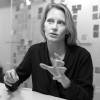 As director of WorkSpace Futures research and New Business Innovation for Steelcase, Elise Valoe leads a global design research and innovation practice developing insights around the future of work, worker, and workplace to fuel insight-led innovation in business strategy, products and employee experiences.
As director of WorkSpace Futures research and New Business Innovation for Steelcase, Elise Valoe leads a global design research and innovation practice developing insights around the future of work, worker, and workplace to fuel insight-led innovation in business strategy, products and employee experiences.

